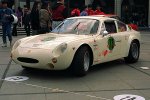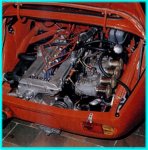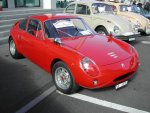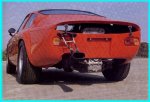By the way, the last manufacturer to use the Ardun heads on the Ford flathead engine was Chrysler. In 1955 Simca purchased Chrysler of France for cash and stock, continuing to production the Vedette under the Simca name. In 1957 Chrysler purchased Ford's intertest in Simca and gained a toehold in a European auto manufacturer. When Simca stopped production of the Vedette in 1963 (or so), Chrysler shipped the tooling for the car and engine to Brazil. By the late 1960s the Chrysler Esplanada, as the Simca Vedette was now called, apparently continued to use the Ford block, but with Ardun heads. The last Esplanada was built in 1971.
Patrick Clement wrote:
Patrick Clement wrote:




